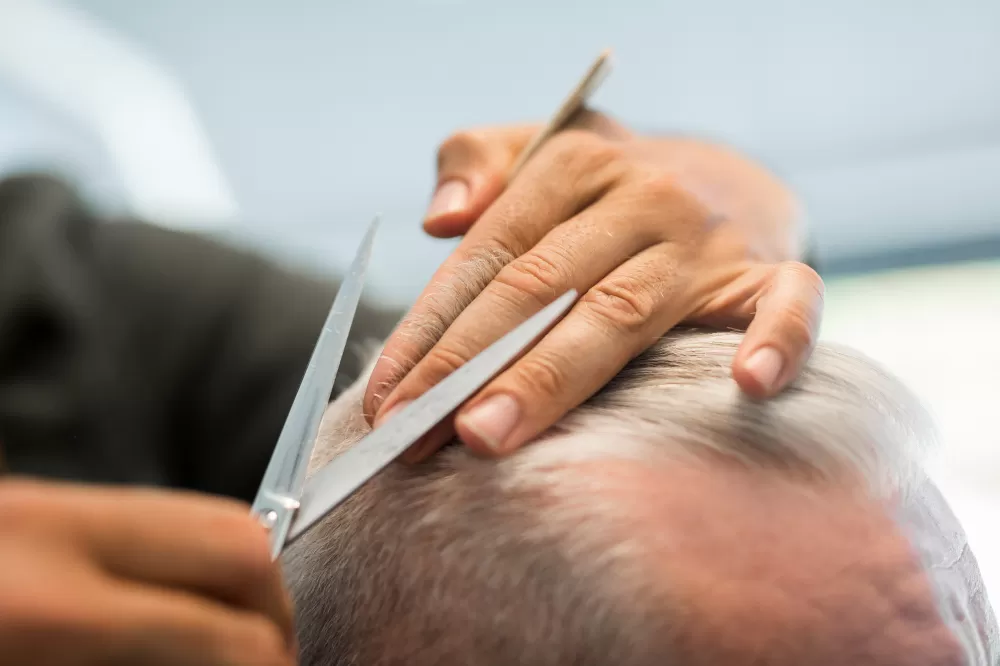A hair transplant is a popular aesthetic procedure that offers a permanent solution to hair loss. However, the post-transplant care process is critical for achieving successful results. One of the most frequently asked questions is, "When can you shave after a hair transplant?" This guide provides a detailed overview of the shaving timeline, precautions, and the recovery process to ensure optimal outcomes.
The Recovery Process After a Hair Transplant
The recovery process after a hair transplant directly impacts when it’s safe to shave. The newly transplanted hair follicles need time to settle into their new location, and the scalp requires time to heal. Below are the general stages of recovery:
First 1-3 Days: The transplanted area is highly sensitive. Redness, crusting, and mild swelling may occur. Avoid touching or irritating the area during this period.
4-10 Days: Crusts begin to shed. Gentle washing with doctor-recommended lotions and shampoos is advised. Using a shaver or razor is strictly prohibited at this stage.
10-14 Days: Most crusts fall off, and sensitivity in the transplanted area decreases. However, the hair follicles are not yet fully anchored.
1-3 Months: The "shock loss" phase may occur, where transplanted hairs temporarily shed, and new hair growth begins.
3-6 Months: Transplanted hairs start to grow, and the scalp largely heals. Shaving may be permitted during this period, but only with doctor approval.
Shaving Timeline Based on Hair Transplant Method
The hair transplant technique used can influence the shaving timeline. The most common methods—FUE, DHI, and FUT—have different recovery and shaving guidelines:
1. FUE (Follicular Unit Extraction)
FUE is one of the most common hair transplant methods, where individual hair follicles are extracted from the donor area and transplanted. Recommended shaving timelines for FUE are:
Donor Area: The donor area (typically the back of the head) can usually be shaved 10-14 days post-procedure. However, skin sensitivity should be considered, and trimming with scissors is preferred.
Recipient Area: Shaving the transplanted area is generally advised after at least 3 months. Trimming with scissors is safer than using a shaver.
2. DHI (Direct Hair Implantation)
DHI involves implanting hair follicles directly using a specialized pen. As a more delicate procedure, it may require a longer wait before shaving:
Donor Area: Light shaving can typically be done after 2-3 weeks.
Recipient Area: Shaving the transplanted area is usually recommended after 4-6 months, as DHI involves denser implantation, requiring careful management of the healing process.
3. FUT (Follicular Unit Transplantation)
In FUT, a strip of skin is removed from the donor area, and follicles are extracted from it. Since stitches are used, the recovery process may take longer:
Donor Area: The donor area can be shaved after stitch removal (typically 10-14 days).
Recipient Area: Shaving the transplanted area is commonly advised after 6 months.
Tips for Shaving After a Hair Transplant
Shaving after a hair transplant requires caution to protect the newly transplanted follicles. Here are some key recommendations:
Consult Your Doctor: Recovery varies for each patient. Always consult your hair transplant specialist before shaving.
Use Scissors Initially: For the first few months, opt for trimming with scissors instead of a shaver or razor to minimize the risk of damaging hair follicles.
Choose Gentle Products: Use alcohol-free products before and after shaving to avoid irritating the scalp.
Select the Right Shaver: If using a shaver, choose a low-setting, non-irritating model designed for sensitive skin.
Protect from Sun Exposure: The scalp may be sensitive after shaving. Use a hat or sunscreen to shield it from UV rays.
Frequently Asked Questions
Can you use a razor after a hair transplant?
No, using a razor after a hair transplant is not recommended. Razors can damage hair follicles and increase the risk of infection. For the first 6 months, scissors or low-setting shavers are safer options.
When can the donor area be shaved after a hair transplant?
The donor area can typically be shaved 10-14 days after the procedure, depending on your doctor’s recommendations.
Can you do a zero shave after a hair transplant?
A zero shave (close-cropped shave) is generally not advised until at least 6 months, or in some cases, 1 year after the procedure. A zero shave can damage hair follicles and negatively impact recovery.
How Shaving Affects Hair Transplant Results
When done at the right time and with proper techniques, shaving does not affect hair transplant results. However, premature or improper shaving can harm hair follicles and jeopardize the success of the transplant. Following your doctor’s guidance and being patient are crucial for protecting your results.
Conclusion
The timeline for shaving after a hair transplant depends on the technique used and individual healing rates. Generally, the donor area can be shaved after 10-14 days, while the recipient area requires 3-6 months. Always seek doctor approval and use gentle methods to ensure the best outcome. By being patient and cautious during the recovery process, you can safeguard your hair transplant results for long-term success.
If you need further information about shaving after a hair transplant, consult a specialist for a personalized plan.





No comments yet. Be the first to comment!